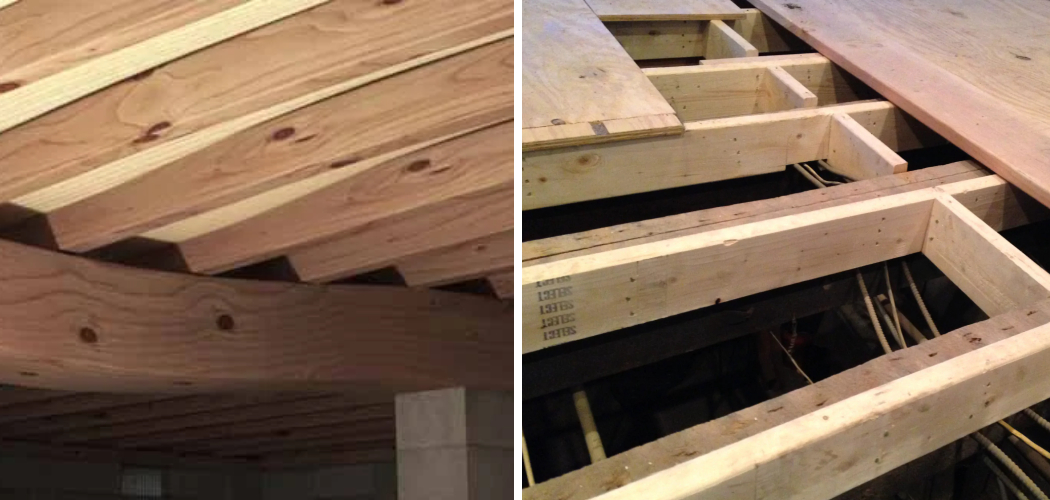Do you have a sagging or weak floor in your home? It may be due to weakened or broken floor joists that need immediate repair. Poorly supported floors can cause cracking and general wear and tear, no matter what type of material it is made from; hardwood, laminate, tile, etc.
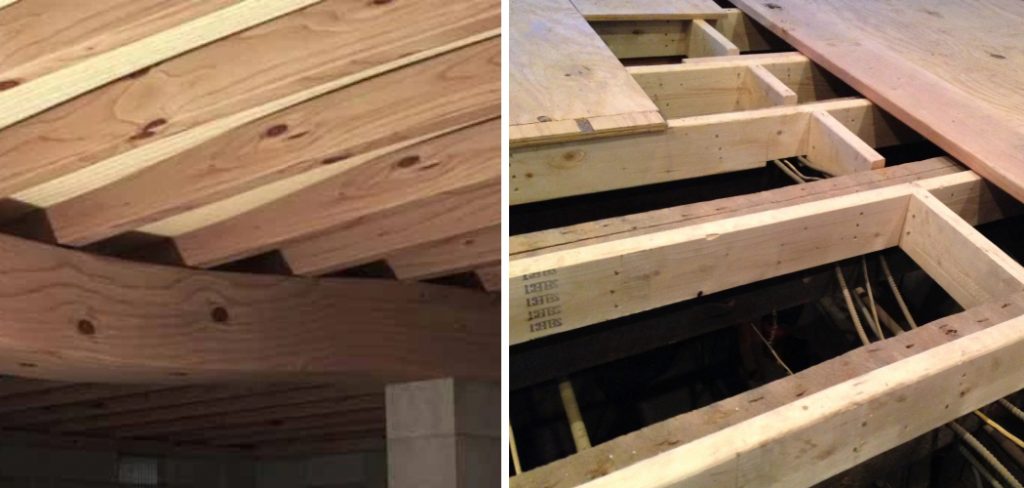
In order for your floors to remain strong and stable for years to come, you must prevent them from getting too worn or damaged by fixing any issue with a sagging floor before it gets worse. So let’s take a look at how you can go about identifying and fixing this problem quickly and easily!
Floor joists are the structure in your home that hold up the floors and ceilings on each level. Over time, they can become damaged due to weathering or weak spots in the structure of the house.
Fortunately, fixing sagging floor joists isn’t something most homeowners need to call in an expert for; instead, once you know what’s causing them to sag and how best to repair them, it’s usually something we can do ourselves without too much difficulty! In this blog post we’ll explore why floor joist sagging occurs and give you all the information you need about how to fix sagging floor joists.
What Causes Sagging Floor Joists?
1. Improperly Secured Joists
One of the most common causes of sagging floor joists is that they weren’t originally installed properly. This can happen if the joists were not attached securely to a beam, wall plate, or other support structure. In some cases, the joists may have been cut too short for the span of space they are required to cover.
2. Deterioration or Damage
Over time, joists may begin to deteriorate due to moisture and pest infestations. Damage from heavy loads or natural disasters can also cause sagging floor joists.
3. Poor Underlying Foundation
If the underlying foundation of your house is weak or damaged in any way, it can lead to saggy floors above. This could be caused by settling soil, a cracked slab, or other issues. Also make sure to check for signs of water damage as this can weaken the foundation and cause sagging joists.
The best way to fix sagging floor joists is to address the underlying cause of the issue. Depending on what caused it, this may involve repairing or replacing damaged pieces of wood, adding additional support beams or bracing for extra stability, or strengthening the foundation of your home.
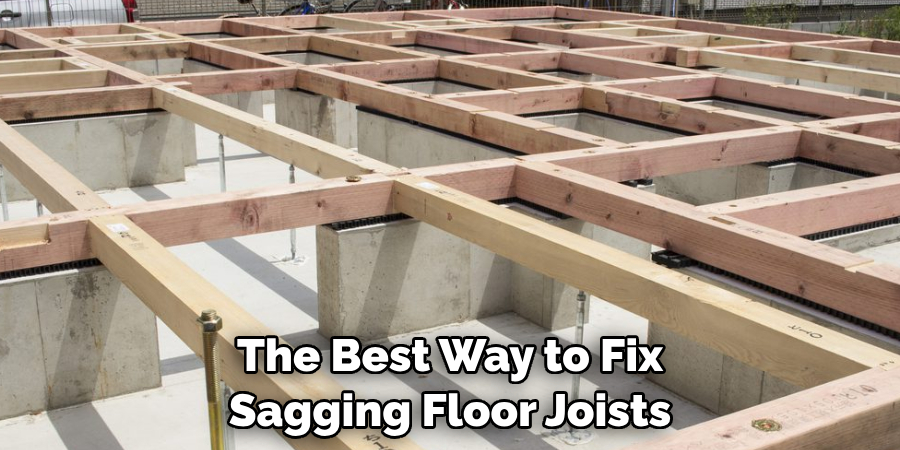
10 Tips on How to Fix Sagging Floor Joists
1. Use Jacks and Shims to Raise the Sagging Area
One of the easiest and most effective ways to fix a sagging floor joist is by using jacks and shims. Jacks are used to raise the overall area of the sagging joists, while shims can be inserted into the gap between two joists to provide additional support.
2. Use Steel Strapping for Additional Support
If jacks and shims are not enough to raise the sagging section, then steel strapping can be used for extra support. This is done by connecting two pieces of lumber together with a piece of steel strapping and creating a more secure connection between them.
3. Install Bridging
Bridging is an important part of supporting floor joists because it helps spread the load evenly across the entire floor. Installing bridging is fairly straightforward and only requires adding a couple of pieces of lumber between two joists and nailing them in place.
4. Replace Damaged Joists
If the joist is severely damaged, it may be necessary to replace it altogether. To do this, you will need to use a saw to cut out the damaged joist and install a new one in its place.
5. Add Anchors to the Floor Joists
Anchors are used to securely fasten the joists to the subfloor, helping to keep them level and stable even under heavy loads. To install anchors, start by drilling pilot holes into the floor joists and then inserting masonry anchors into the holes.
6. Add Additional Joists to Increase Support
It is also possible to add additional joists to increase support for a sagging floor. When adding extra joists, be sure that the spacing between them is sufficient and that they are fastened securely in place with nails or screws.
7. Strengthen Weak Joints
If the joint between two-floor joists is weak, it can cause them to sag. To fix this problem, you will need to reinforce the joint with braces or metal straps. Also, make sure that the joists are properly connected with nails or screws.
8. Increase Floor Joist Span
If the span of the floor joists is too long, it can cause them to sag over time. To prevent this from happening, you can increase the span by adding additional supports or by using thicker lumber for the joists.
9. Install Subfloor Supports
If there are not enough subfloor supports, it can cause the joists to sag. To fix this, you will need to install additional support beams or lumber between the joists and secure them in place with nails or screws.
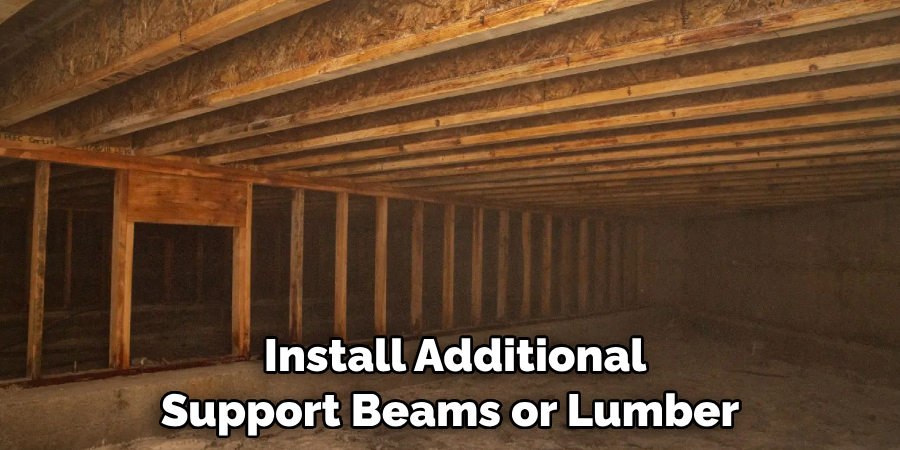
10. Use a Joist Hanger
A joist hanger is an easy way to add extra support for floor joists. This device is simply nailed to the top of a joist and then connected to an adjacent joist with nails or screws. Joist hangers are easy to install and provide excellent support for sagging floor joists.
Follow these tips to fix sagging floor joists and keep your home safe and secure. With a bit of time and effort, you can make sure that your floor joists are strong and stable for years to come.
Frequently Asked Questions
What Precautions Should I Take When Fixing a Sagging Floor Joist?
It is important to take safety precautions when fixing sagging floor joists. Make sure to wear protective eyewear, gloves, and clothing for protection from any debris or sharp edges that could result in injury.
Additionally, be aware of your surroundings and make sure no one is underneath the joist while you are working. You should also use the appropriate tools for the job, such as jacks and shims, to ensure that the joist is securely supported
How Much Does it Cost to Fix a Sagging Floor Joist?
The cost of fixing a sagging floor joist depends on the severity of the issue. Minor repairs typically require minimal materials and can be handled quickly.
However, more significant problems may require replacing the floor joist altogether and could cost significantly more. Generally speaking, most homeowners can expect to spend anywhere from $400 – $900 on repairs for sagging floor joists.
What Materials Do I Need to Fix a Sagging Floor Joist?
The materials that you need will depend on the extent of the issue. Generally speaking, you will need a carpenter’s level, shims, jacks, and screws/nails. You may also need wood putty and additional lumber for more significant repairs.
Can I Fix a Sagging Floor Joist Myself?
Yes! While it is always wise to consult with a professional if you have serious concerns, many homeowners can successfully repair sagging floor joists without seeking help. Make sure to properly assess the issue before starting and be aware of your own capabilities and safety precautions necessary for the job. With the proper tools and knowledge, most repairs can be handled in a few hours or less.
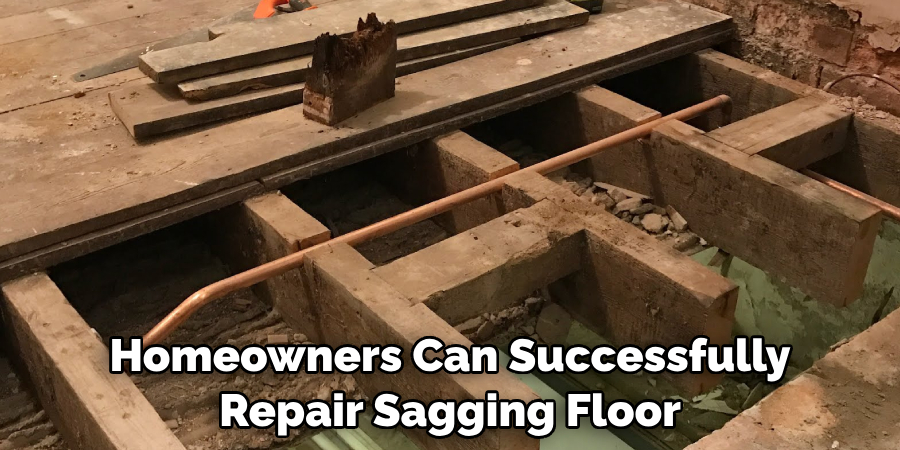
How Long Will It Take to Fix a Sagging Floor Joist?
The time it takes to fix a sagging floor joist will depend on the severity of the issue. Minor repairs can typically be completed in a few hours, while more significant problems may take several days to repair.
It is important to properly assess the situation before beginning and set aside enough time to make sure the job is done correctly. Additionally, make sure to take any necessary safety precautions while working. With the proper materials and knowledge, most repairs can be done in a few hours or less.
Can I Use Shims to Fix a Sagging Floor Joist?
Yes, shims are an effective way to fix a sagging floor joist. They can help lift the joist back into position, as well as add additional support and stability. Properly placed shims can also help prevent future sagging. It is important to make sure the shims are properly secured, so they do not shift over time and undo the repair. Additionally, you may need to use jacks to sufficiently lift the joist before placing the shims in place.
What is the Best Way to Prevent Sagging Floor Joists?
Regularly inspecting and maintaining floor joists can help prevent sagging. You should look for signs of excessive wear, rot, or other damage on a regular basis. Additionally, you should ensure that the joist has adequate support and does not exceed its weight limits.
If necessary, you can add additional support to help distribute the weight more evenly. Finally, you should make sure to use appropriate materials when making repairs and never overload joists with too much weight.
How Much Weight Can a Floor Joist Hold?
The weight capacity of a floor joist depends on the material used and the spacing between joists. Generally speaking, wood joists can support up to 40 pounds per square foot, while metal joists can hold up to 50 pounds per square foot. It is important to not exceed these limits to ensure the safety and stability of your floor. If you have any doubts, it is wise to consult with a professional before adding additional weight or making repairs.
When Should I Seek Professional Help for a Sagging Floor Joist?
If the issue seems too complicated or difficult to handle yourself, then it would be best to seek help from a professional. Additionally, if the joist is severely sagging, or if there is rot or other signs of major damage, then it would be best to call in a specialist. A professional can help inspect the issue and make sure that any necessary repairs are done safely and correctly.
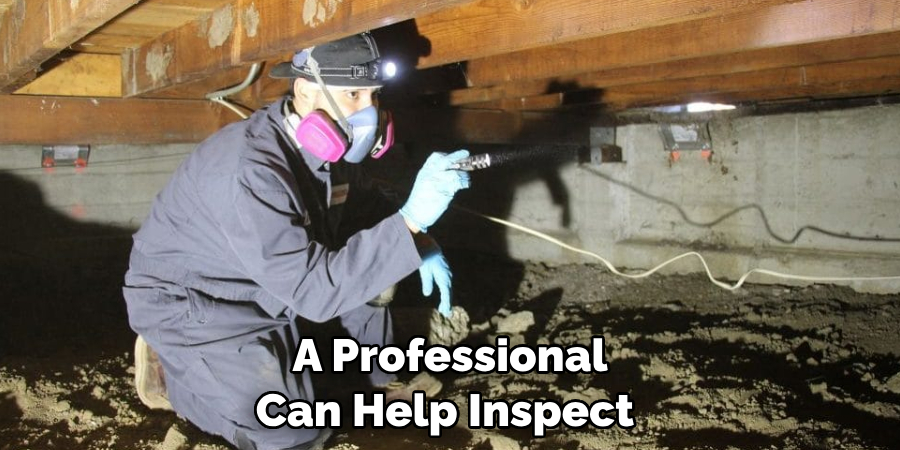
Conclusion
Fixing sagging floor joists can seem daunting, but with a little knowledge and the right tools, it’s a manageable task. If you keep an eye out for telltale signs of damage and follow all of the safety advice above, you can help ensure your project is as successful as possible.
Of course, if you’re new to home repair projects or if you’d just rather leave it to the professionals, there are plenty of experienced contractors who would be more than happy to assist you.
Now you know how to fix sagging floor joists! No matter what route you decide to take in repairing your sagging floor joists, be sure that whatever solution you choose is properly supported and load-tested before using them again – because at the end of the day, nothing beats having peace of mind!
